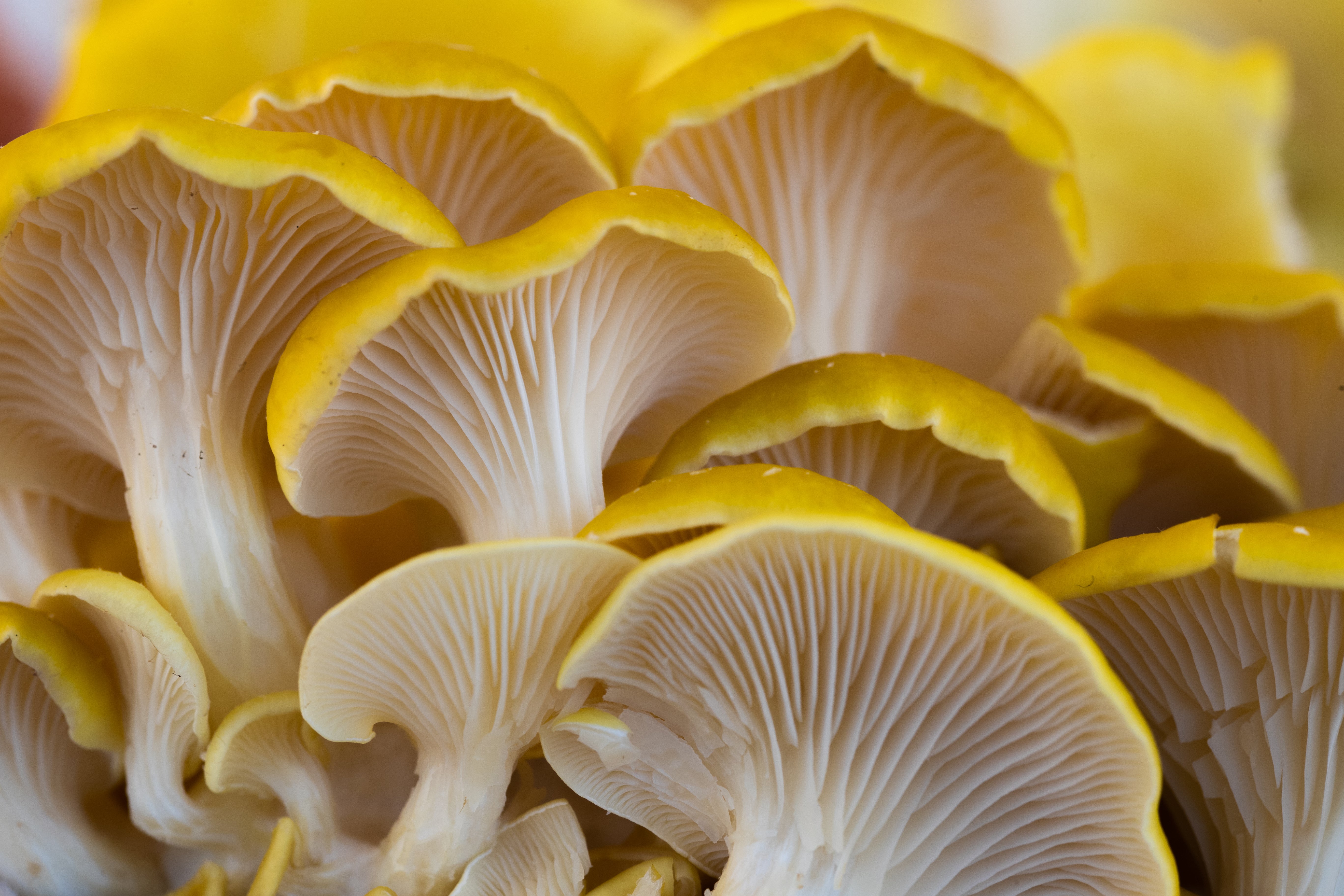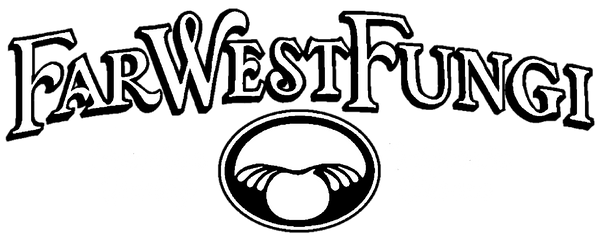Yellow Oyster

Yellow Tree Oysters (Pleurotus citrinopileatus) are one of the most visually striking of the Pleurotus species. Growing in layered clusters, with gradients ranging from pale sulfur to deep gold, they often seem to emit a light of their own, like garden flowers in the late afternoon. The caps are smooth and dry, and slightly convex, with creamy white gills tapering to a curved stem. Yellow Oysters are native to Asia, but are naturalized in the wild across North America and Europe. A rich dose of carotenoids gives these mushrooms their sunny colors. These are the same compounds found in carrots, bell peppers, sweet potatoes, and oranges. Carotenoids act as antioxidants, which help repair and reverse cellular damage done by exposure to solar radiation, cigarette smoke, and other environmental factors that speed the aging process.
Because they are a saprophytic species (meaning that they love to grow on decaying tree stumps and logs), Yellow Tree Oysters are among the easiest varieties to cultivate at home, and will happily colonize a variety of homemade substrates, from sawdust, to coffee grounds, straw, compost, and paper. Like other members of the Pleurotus family, Yellow Oysters are particularly adept at drawing toxins out of the substrate in which they grow. This makes them excellent candidates for mycoremediation, where they are used to clean up ecosystems that have been damaged by chemical spills and heavy pollution. However, this also means that when cultivating them, care must be taken in the selection of an organic substrate, as toxins can be drawn into the fruiting bodies of the mushrooms.
Yellow Oysters are much more fragile than their more familiar Blue Oyster cousins. This is one reason why they aren’t commonly found in big comercial supermarkets – they are difficult to mass produce and ship without damage. This brittle texture makes them somewhat difficult to cook as well, but fortunately this is one of the only mushrooms that is actually best eaten raw. They have a crisp, refreshing cucumber flavor, and are delicious tossed into any kind of salad. They also make excellent quick pickles. Submerge them for twenty minutes or so in a 2 - 1 brine of vinegar and water, with a little salt and sugar, and they are ready to go. Try brightening up a broiled filet of fatty fish with a garnish of pickled Yellow Oysters and fresh herbs. They also make an great mild substitute for pepperoncinis on pizza, or in sandwiches.
And best of all - these mushroom keep most of their color when pickled!
